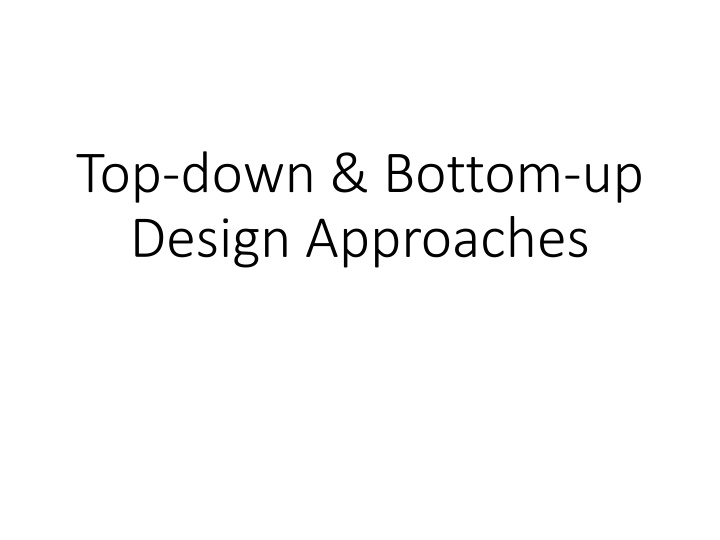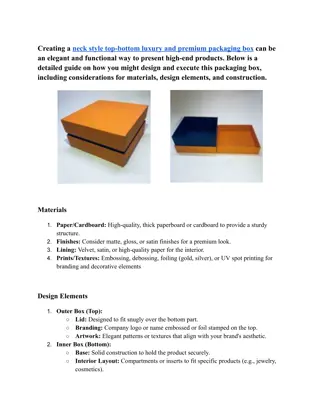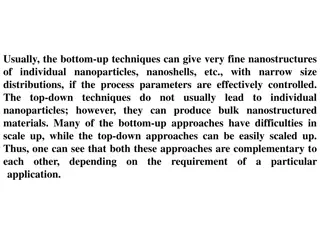Top-Down & Bottom-Up Design Approaches
In software design, the Top-Down and Bottom-Up approaches play a crucial role. Top-Down design involves breaking down the system from a high-level overview to detailed components, ideal for well-defined problems. On the other hand, Bottom-Up design starts with basic modules that are further refined, suitable for complex or undefined problems. Both methods offer distinct advantages in software development.
Download Presentation

Please find below an Image/Link to download the presentation.
The content on the website is provided AS IS for your information and personal use only. It may not be sold, licensed, or shared on other websites without obtaining consent from the author.If you encounter any issues during the download, it is possible that the publisher has removed the file from their server.
You are allowed to download the files provided on this website for personal or commercial use, subject to the condition that they are used lawfully. All files are the property of their respective owners.
The content on the website is provided AS IS for your information and personal use only. It may not be sold, licensed, or shared on other websites without obtaining consent from the author.
E N D
Presentation Transcript
Top-down & Bottom-up Design Approaches
Top-down & Bottom-up Design Methods Applicable to all methodologies Top-Down Top-level description decomposed to lower-level, small modules Bottom-Up Basic set of modules and interrelationships formulated to higher-level concepts
Top-down Level-oriented design Iterative process of decomposition Allows for early evaluation of functional capabilities Best suited when problem & environment are well- defined Ex: designing a compiler
Top-down design methodology A popular design methodology for software is Top- Down design and Bottom-up coding. It starts with a specification of the system at the top level. This top-level is then broken down into major tasks and subtasks. Each major task (and subtask) is broken down into smaller subtasks as appropriate. 4
Top-Down Design Graphical illustration of the Top-down design methodology. The number of levels continues until the subtask is one that can be directly coded. 5
Bottom-up Yields smaller and more agile programs Promotes code re-use Permits assessment of sub-modules Best suited when problem is ill-defined or missing






















